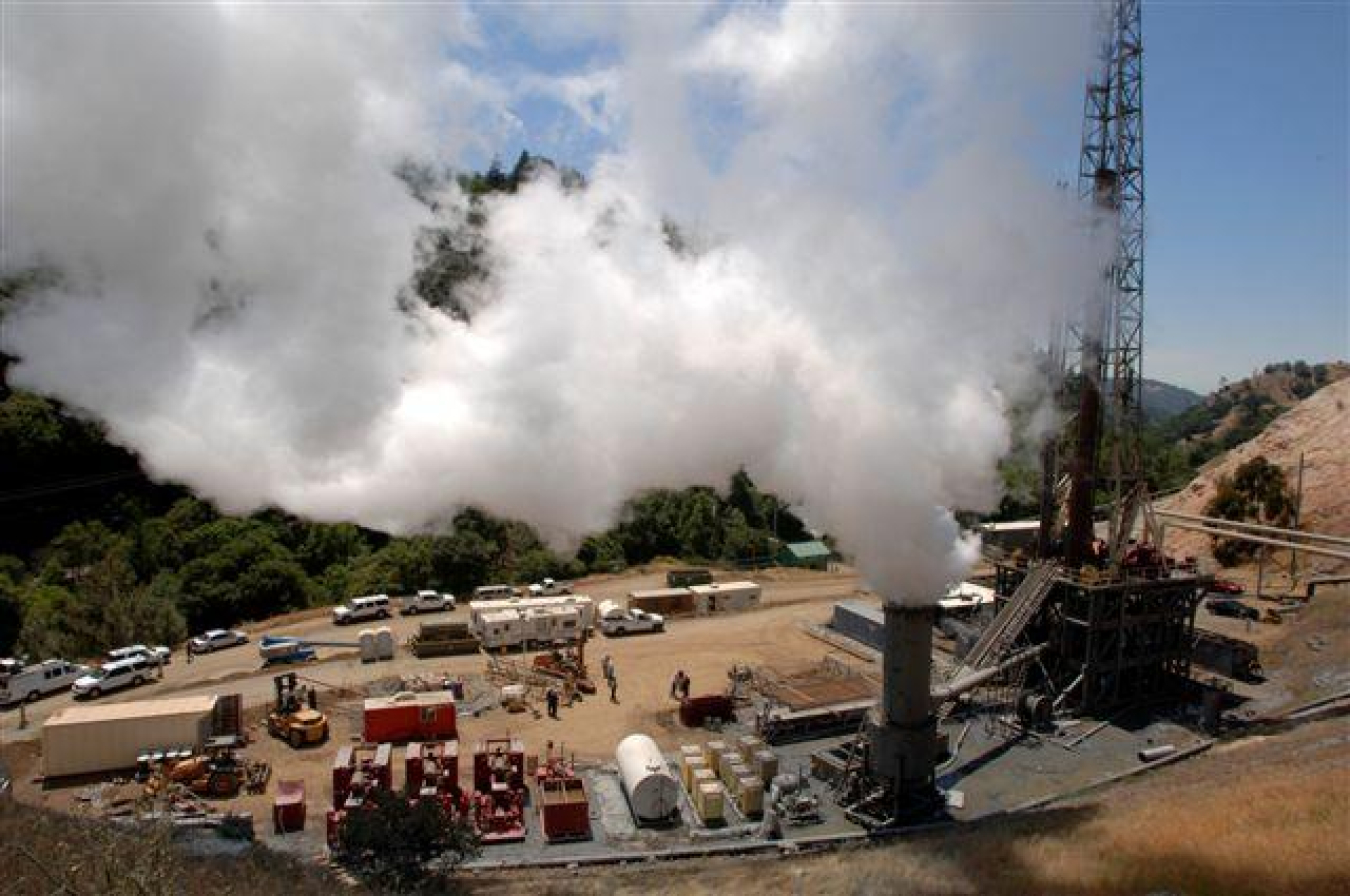
The Geysers geothermal complex, where the Energy Department’s geothermal exploration at Caldwell Ranch is located, remains the largest operating geothermal field in the world. Caldwell Ranch has achieved a first-ever replicable strategy to reopen an abandoned steam field there, with implications for development in other regions of California as well. Source: Geothermal Resources Council
As part of a geothermal exploration effort to search for geothermal resources nationwide, a $5 million Energy Department investment to Calpine Corporation culminated in the confirmation of an initial 11.4 MW of equivalent steam this year—50% more than early estimates—from three previously abandoned wells at The Geysers, the largest operating geothermal complex in the world. Calpine Corporation’s Caldwell Ranch Exploration Project is a first-ever achievement to reopen an abandoned steam field, validating universally applicable technologies that bear immediate implications for other geothermal-rich regions of California–Coso, Salton Sea, and Medicine Lake–and nationwide.
This project also took the innovative step of combining data sources, including temperature logs and isotopic measurements, to better define and model the 3-D volume of the geothermal reservoir. These exploration steps could significantly lower the costs of geothermal development by avoiding risks associated with drilling and stranded assets. While modeling is not a new concept to geothermal development, pinpointing the reservoir and accurately measuring volume will better target drilling and prevent overestimating reservoir reserves. Calpine’s reservoir model indicates that the Caldwell Ranch Project area and a portion of the EGS demonstration area are capable of producing between 40 and 45 MWe of new, sustainable electrical generation without any significant decline in the adjacent, existing steam fields.
The technology demonstrates that fields can rejuvenate in the proper settings. Letting a portion of a geothermal field lie idle for three or more years, allowing the reservoir to reheat, and then reopening or redrilling previously abandoned wells, provides a successful model at The Geysers. This could potentially expand the capacity there by 9 MW. In fact, this model can be replicated where conditions are similar— where there are decreases in reservoir pressure resulting from heat stored in the rock mass.
The Office of Energy Efficiency and Renewable Energy (EERE) success stories highlight the positive impact of its work with businesses, industry partners, universities, research labs, and other entities.
